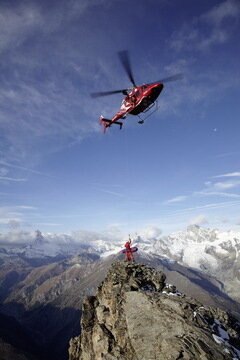Emergency Medical Services in Mountain Areas of Europe and North America

Summary
Aims and methods: inquiry about on-site treatment of patients in mountain areas in 14 countries in Europe and North America (non-responder rate 33%) aiming to compare emergency medical services. Results: 37,535 ground rescuers and 747 helicopters are ready for the evacuation of casualties and patients in mountain areas. And 1316 physicians and 50,967 paramedics take part in ground and air mountain rescue operations. In Europe, 63.2% helicopters have a physician on board, 17.8% are staffed with a paramedic and 19% have no medically trained personnel on board. In North America, 31.6% (p < 0.001) of helicopters are staffed with a doctor, 59.3% (p < 0.001) with a paramedic and 9.1% (p < 0.001) have no medical personnel on board. The percentage of on-site treatment according to the recommendations of the International Liaison Committee on Resuscitation (ILCOR) or International Commission for Alpine Rescue (ICAR) varies among all countries (p < 0.001) and is positively related to the percentage of physician-staffed helicopters (r = 0.76, p < 0.001). Paramedics in 90.9% countries are obliged to be medically trained, but physicians only need to have a standardised training in emergency medicine in 50% (p = 0.042). Conclusions: On-site treatment according to ILCOR or ICAR recommendations is performed more often in countries where physicians are regularly involved in mountain rescue operations. However, no conclusions can be drawn from the data as to the efficiency of treatment. The data show a lack of medical education in specific, mountain rescue related problems. Physicians involved should undergo suitable training.
Key words
Emergency medical service, helicopter emergecy medical service, mountain medicine, mountain rescue, paramedic, prehospital care.
-----------------------------
Please look at the attached file for the complete recommendation!